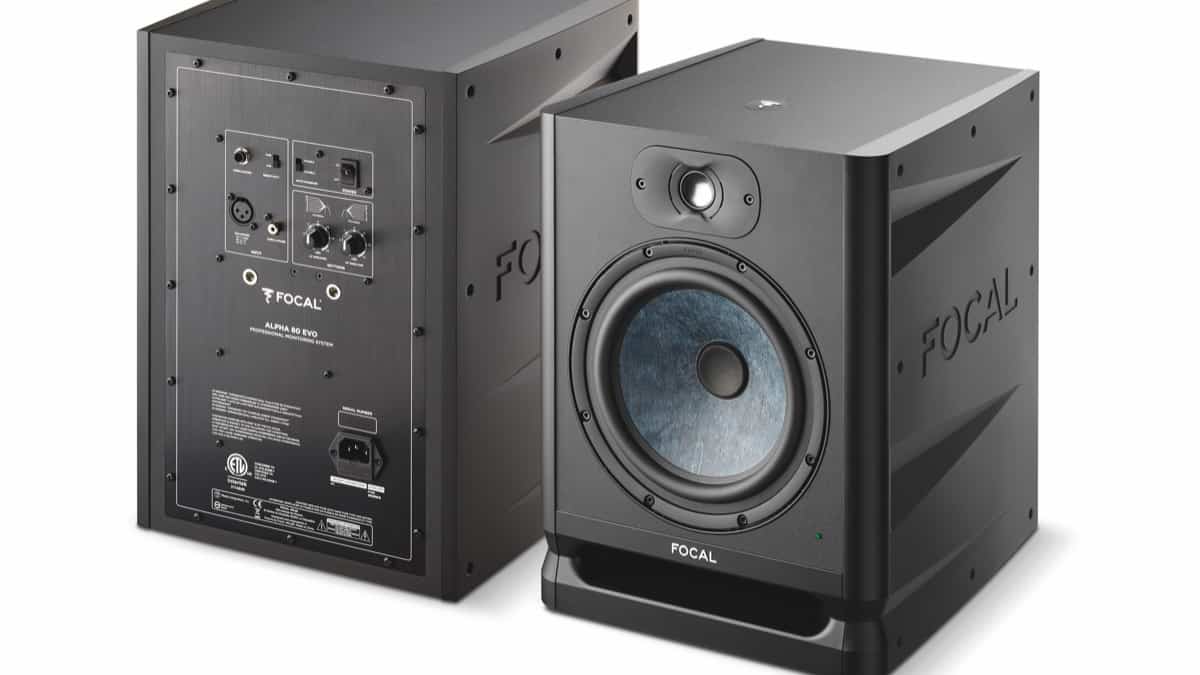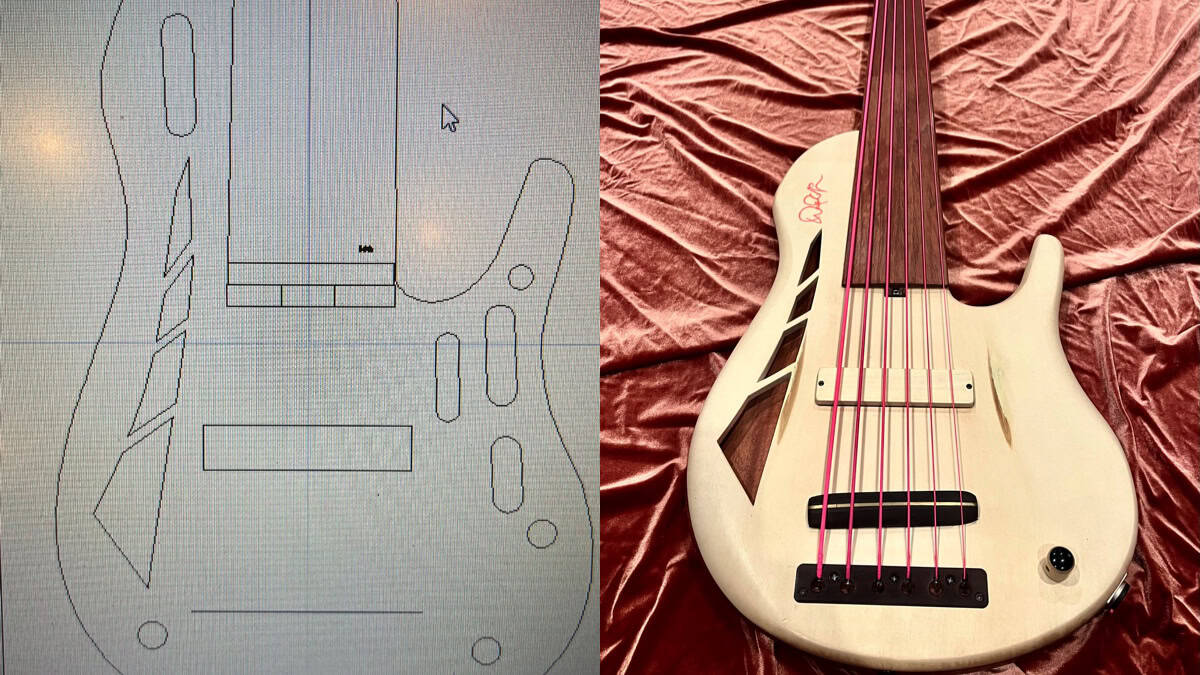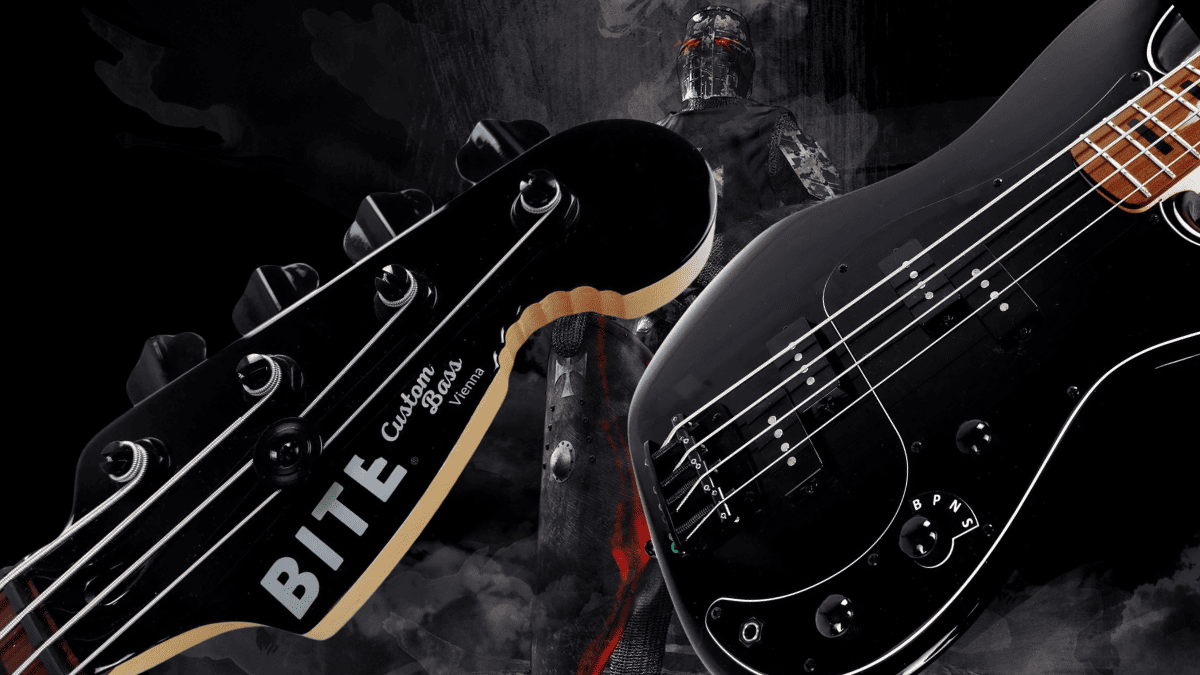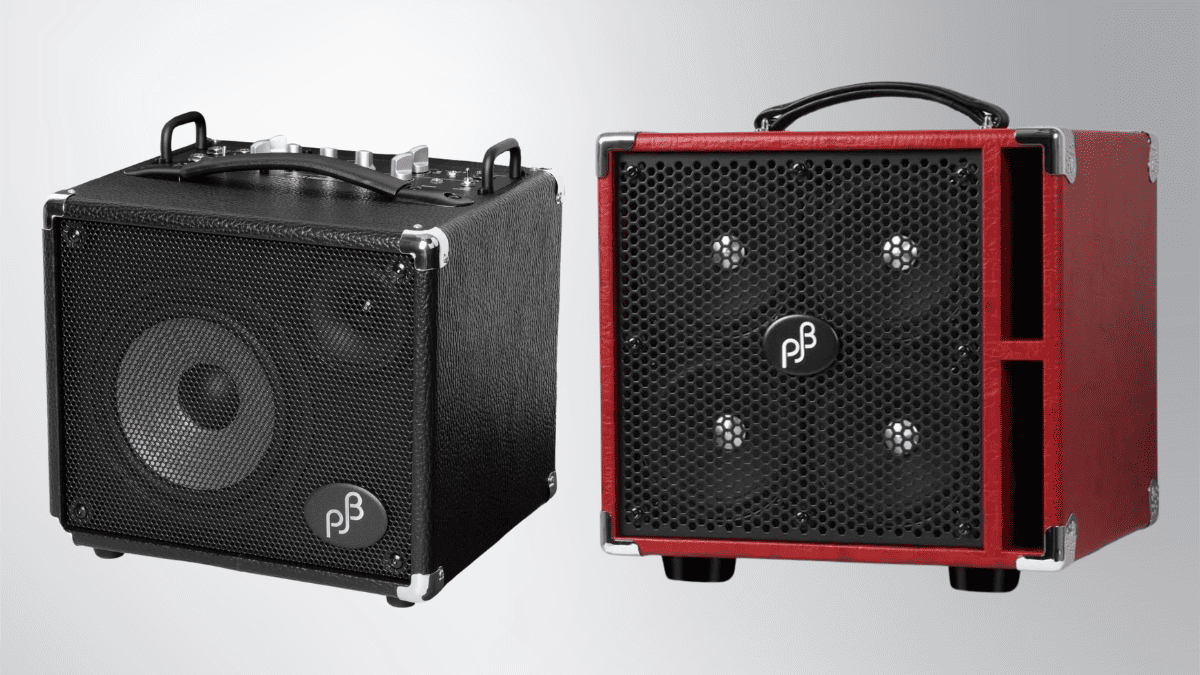Gear Reviews
Review: Focal Alpha 80 EVO Studio Monitors

Focal Alpha 80 EVO Studio Monitors…
Studio monitors may not be the first category that jumps to mind when thinking about gear reviews here at Bass Musician Magazine. However, consider this: How many of you are increasingly recording your own parts in your home studio? How many of you are listening to and making notes on mixes of your bands’ songs, albums, etc.? Heck, how many of you like to listen to your favorite music and really hear what’s going on with the recordings, especially the all-important bass guitar and upright bass?
I would argue that more and more, bass players and musicians in general are required to take an increasingly active role in the recording and mixing of the music they play. Personally, remote recording sessions have become the norm for me, as the industry has pivoted and technology has allowed simple home studios to get the job done admirably. These days, electric bassists with a great DI/preamp and a solid interface can get some fantastic sounds at home, and it sure helps the bottom line when deciding what you truly need expensive studio hours for, vs what can be done at home.
As you’re probably aware, studio monitors range from a hundred bucks for the pair, all the way up to stratospheric costs that rival exotic cars. I’ve long been searching for a great-sounding pair of studio monitors that sound phenomenal, without costing a phenomenal amount of money. While tracking some bass in a friend’s home studio, I was shocked by how great my bass sounded through a pair of his Focal Alpha 50 (5”) studio monitors. The detail, the impact, the low end (even through 5” drivers!), were all remarkable. So, naturally, I thought “I gotta check out the bigger ones!”.
Focal sent me their new Alpha 80 EVO monitors to check out, which are the 8” big brothers to the 5” Alpha 50 EVO’s and 6.5” Alpha 65 EVO’s and boast the highest wattage 80W + 15W bi-amped to the 8-inch woofer and 1-inch aluminum tweeter) and richest low-frequency extension (38Hz–22kHz (+/- 3dB) of the family.
The EVO series comes as an update to the earlier Focal Alpha family and feature some interesting revisions that improve upon the already stellar performance: “Slate Fiber” non-woven woofers, made in France from recycled carbon fiber for rigidity; enhanced connectivity via a ¼” TRS input (in addition to XLR and RCA); Class-D amplifiers; enhanced cabinet structural rigidity and laminar porting for precise low-end definition. In addition, the Alpha 80 EVO features an automatic standby mode and integrated mount points for wall or ceiling mounting.

Now I’ll be the first to admit that my studio room is not perfect. Not even close.
And most engineers will be quick to tell you the importance of investing in room treatments to set yourself up for success with accurate monitoring. But in my humble, “way less than ideal but what I got” home studio/home office, the Alpha 80’s immediately impressed me when I toggled them with the 8” monitors I was previously using. I won’t name names, but I did a ton of research, and bought a very highly regarded set of 8” powered monitors for my mixing and listening at my desk. I even bought the matching sub to give the low-end some oomph. All that together was in the price ballpark of the of Alpha 80’s, which come in at around $1,000 for the pair. Upon firing up the Focal’s I was immediately struck with the detail, clarity, depth, and low-frequency extension of these monitors. Mixes came alive, recordings sounded clearer and more nuanced, and the bass sounded deep and accurate (I actually prefer the low end on this to the previous system, which utilized a 1000w subwoofer rated down to 23hZ). These monitors have extremely low noise floor with almost no audible hiss or noise when idle, which is quite nice.
In terms of EQ, the Alpha 80 EVO’s offer controls for shelving +/- 6 dB below 250 Hz and +/- 3 dB above 4.5 kHz to help calibrate the speakers to your room, or your preferences. Focal does have a subwoofer, the Sub One, but I never found the low end lacking for my purposes, as one who admittedly likes a little extra low-end kick.
The only thing I could possibly be critical of with the Alpha 80 EVO’s has to do with the automatic standby mode. Occasionally, when listening at very low levels, one of the speakers would enter standby mode, and I’d have to goose the volume up to get it to turn back on. It should be noted that the automatic standby mode is defeatable, via a switch on the rear panel, which defaults to master on/off switch.
To me, a professional bassist needs an interesting arsenal of tools to be effective at their job. For many of us, that includes the ability to mix, or make mixing notes for the recordings we are part of. Finding a great-sounding pair of studio monitors that honestly and accurately delivers the sound of your bass and shows you not just what is working, but what isn’t, is more and more necessary in keeping with the trends in the business. To that end, for the price point, I think the Focal Alpha EVO’s are a very strong contender, and they descend from a strong lineage of top-shelf pro audio speakers.
For more info, visit Focal online at focal.com/en/pro-audio
Gear
New Joe Dart Bass From Sterling By Music Man

Sterling by Music Man introduces the Joe Dart Artist Series Bass (“Joe Dart”), named after and designed in collaboration with the celebrated Vulfpeck bassist.
Above photo credit: JORDAN THIBEAUX
This highly-anticipated model marks the debut of the Dart bass in the Sterling by Music Man lineup, paying homage to the Ernie Ball Music Man original that all funk players know and love. The bass embodies many of the original model’s distinctive features, from its iconic minimalist design to the passive electronics.

The design process prioritized reliability, playability, and accessibility at the forefront. Constructed from the timeless Sterling body, the Dart features a slightly smaller neck profile, offering a clean tone within a comfortable package. The body is crafted from soft maple wood for clarity and warmth while the natural finish emphasizes the simple yet unique look.
Engineered for straightforward performance, this passive bass features a ceramic humbucking bridge pickup and a single ‘toaster’ knob for volume control. Reliable with a classic tone, it’s perfect for playing in the pocket. The Dart is strung with the all-new Ernie Ball Stainless Steel Flatwound Electric Bass Strings for the smoothest feel and a mellow sound.

The Sterling by Music Man Joe Dart Bass is a special “Timed Edition” release, exclusively available for order on the Sterling by Music Man website for just one month. Each bass is made to order, with the window closing on May 31st and shipping starting in November. A dedicated countdown timer will indicate the remaining time for purchase on the product page. Additionally, the back of the headstock will be marked with a “2024 Crop” stamp to commemorate the harvest year for this special, one-of-a-kind release.
The Joe Dart Bass is priced at $399.99 (MAP) and can be ordered globally at https://sterlingbymusicman.com/products/joe-dart.
To learn more about Joe Dart, visit the official Vulfpeck artist site here https://www.vulfpeck.com/.
Gear Reviews
The Frank Brocklehurst 6-String Fretless Bass Build

A few months ago, my Ken Bebensee 6-string fretted bass needed some TLC. You know, the one rocking those Pink Neon strings! I scoured my Connecticut neighborhood for a top-notch luthier and got pointed to Frank Brocklehurst, F Brock Music. He swung by my place, scooped up the bass, and boom, returned it the next day, good as new. Not only that, he showed up with a custom 5-string fretted bass that blew me away. I couldn’t resist asking if he could whip up a 6-string fretless for me.
Alright, let’s break down the process here. We’ve got our raw materials: Mahogany, Maple, and Holly. Fun fact – the Mahogany and Maple have been chilling in the wood vault for a solid 13 years. Frank is serious about his wood; they buy it, stash it away, and keep an eye on it to make sure it’s stable.
First up, they’re tackling the Mahogany. Frank glues it together, then lets it sit for a few days to let everything settle and the glue to fully dry. After that, it’s onto the thickness planer and sander to get it nice and flat for the CNC machine. The CNC machine’s the real star here – it’s gonna carve out the body chambers and volume control cavity like a pro.
While the Mahogany’s doing its thing, Frank goes onto the neck core. Three pieces of quartersawn maple are coming together for this bad boy. Quartersawn means the grain’s going vertical. He is also sneaking in some graphite rods under the fingerboard for stability and to avoid any dead spots. The truss rod is going to be two-way adjustable, and the CNC machine’s doing its magic to make sure everything’s just right.
Now, onto the design phase. Frank uses CAD software to plan out the body shape, neck pocket, chambering, and those cool f-holes. I had this idea for trapezoid F-holes, just to do something different. The CAD software also helps us map out the neck shape, graphite channels, and truss-rod channel with pinpoint accuracy.

Once everything’s planned out, it’s CNC time again. Frank cuts out the body outline, neck pocket, and the trapezoid F-holes. Then it’s a mix of hand sanding and power tools to get that neck just how we like it. Oh, and those f holes? We’re going for trapezoids of different sizes – gotta keep things interesting.
Next step: gluing that neck into the pocket with some old-school hide glue. It’s got great tonal transfer and can be taken apart later if needed. Then it’s onto hand-carving that neck-body transition.
For the custom-made bridge, Frank uses brass for definition and Ebony for tonal transfer and that warm, woody sound.
BTW, for tunes, Frank went with Hipshot Ultralights with a D Tuner on the low B. This way I can drop to a low A which is a wonderful tone particularly if you are doing any demolition around your house!
Now it’s time for the side dots. Typically, on most basses, these dots sit right in the middle of the frets. But with this bass, they’re placed around the 1st, 3rd, 5th, 7th, 9th, and 12th frets.
Frank’s got his pickup hookup. Since the pickup he was building wasn’t ready, he popped in a Nordstrand blade to give it a whirl.
It sounded good, but I was itching for that single-coil vibe! And speaking of pickups, Frank showed me the Holly cover he was cutting to match, along with all the pink wire – talk about attention to detail!
A couple of things, while it is important for me to go passive, it is equally important for me to just go with a volume knob. Tone knobs are really just low-pass filters and the less in the way of a pure sound for me, the better.
Finally, it’s string time! As usual, I went for the DR Pink Neon strings. Hey, I even have matching pink Cons…Both low tops and high!
Once we’ve got everything tuned up and settled, we’ll give it a day or two and then tweak that truss rod as needed. And voila, we’ve got ourselves a custom-made bass ready to rock and roll.
I want to thank Frank Brocklehurst for creating this 6 string beast for me.
Gear Reviews
Review Transcript: BITE Custom Bass – The Black Knight PP Bass

This is a written transcript of our video review of the BITE Custom Bass Black Knight PP Bass originally published on March 4, 2024
BITE Custom Bass – The Black Knight PP Bass Review…
Bass Musician Magazine did a review on a Steampunk bass from BITE Guitars about three years ago, it was an amazing instrument, and we were very impressed. Now we’re happy to bring you another BITE bass, the Black Knight PP.
Everybody needs a P-type bass, it’s the standard of bass. If you’re recording, they want you to have a P bass. So why not have something that gives you a little more by having two instead of one P pickup. That’s the idea of this bass, it’s the first thing that leaps out: the double P pickup configuration.
Installing two of their 1000 millivolt split-coil pickups, BITE then went one step further and wired them up in a 4-way parallel/series circuit, a look at the controls reveal a 4-way rotary selector:
The first position, marked “B”, gives you the bridge pickup by itself.
The second position, marked “P”, gives you the bridge and neck pickups in parallel mode, that’s the traditional J-type circuit, it reduces output due to the physical law of parallel circuits.
Position number 3 is marked “N”, it gives you the neck pickup by itself.
And finally, number 4, marked “S”, gives your bridge and neck in a series (humbucking) mode which adds up resistances and thus boosts output. The other two controls are master volume and master tone.
What’s more, like every BITE bass, this one also has a reinforced headstock heel designed to give it extra output and sustain. The BITE website features a graph and explanation of what they have done to the heel, as compared to traditional headstocks.
A look at the body reveals a beautiful Black Blast body finish and underneath that we have alder wood. The bass has a matching headstock with a 4-in-line tuner setup and the traditional bite out of it, so everybody will know what kind of bass you’re playing. The pickguard is 3-ply black, the neck is vintage tinted hard maple and it has a satin speed finish at the back which keeps your thumb from sticking.
On top of that, there’s a clear-coated roasted black locust fretboard with black blocks marking the frets. The nut is a black Graph Tec nut, we’ve got diamond dome control knobs, and the tuners are lightweight compacts with cloverleaf buttons and a 1:17 ratio precision gear. The bridge is a Gotoh brass bridge with 19-millimeter string spacing.
Overall measurements: we’ve got a standard 34″ scale, a 1.65″ width nut and a C neck profile. This bass weighs 8.2 pounds, or 3,7 kilograms for our metric friends, and it uses standard 18% nickel silver frets.
Taking a closer look at the sound, this bass is a joy to play. The BITE proprietary 1000 millivolt pickups deliver an extraordinary amount of output which is surprising considering this is a passive instrument. You may even want to set your amp to active mode because of all of the juice you’re getting out of this guy.
The tonal possibilities are very versatile, it’s a straight P if you want but also much more with those different arrangements of the circuitry. So why have multiple basses when you’ve got one that can give you your basic P plus a lot more?
To sum it up, the Black Knight PP is an amazing instrument. The attention to detail that BITE puts into their basses is second to none. This bass is also amazingly balanced and gorgeous to hold and feel with the satin neck finish.
For more information, visit online at bite.guitars/product/black-knight-pp
Bass Videos
Reviews: Phil Jones Bass Compact Plus 450 and Bass Engine 17

Phil Jones Bass Compact Plus 450 and Bass Engine 17 Reviews…
In this issue, we take an in-depth look at two new amps from Phil Jones Bass, the Compact Plus 450 and Bass Engine 17.
For more information, visit online at pjbworld.com
Bass Videos
Video Review: BITE Custom Bass – The Black Knight PP Bass

BITE Custom Bass – The Black Knight PP Bass Review…
I am sure many of you saw my review of the Snobby Steampunk Bass from BITE Guitars back in February of 2021 and will remember what a remarkable bass it was. BITE has been building custom basses since 2019 and has a unique custom approach where you can configure your bass to your specs.
I am very excited to have another Bass From BITE Guitars in my hands, The Black Knight PP Bass!
The need for a P-Bass in one’s armamentarium is pretty standard for bass players and I recall chatting about this with Marty O’Brien about a year ago. It turns out that Marty and BITE Guitars got together and came up with this excellent configuration that gives you a P-Bass with a whole lot more. Marty even played his own Black Knight PP bass at the 2024 NAMM show. You can see his review here.
Join me as I take an in-depth look at this very cool instrument and share all the details.
Here is The Black Knight Bass from BITE Guitars!
For more information, visit online at bite.guitars/product/black-knight-pp
























